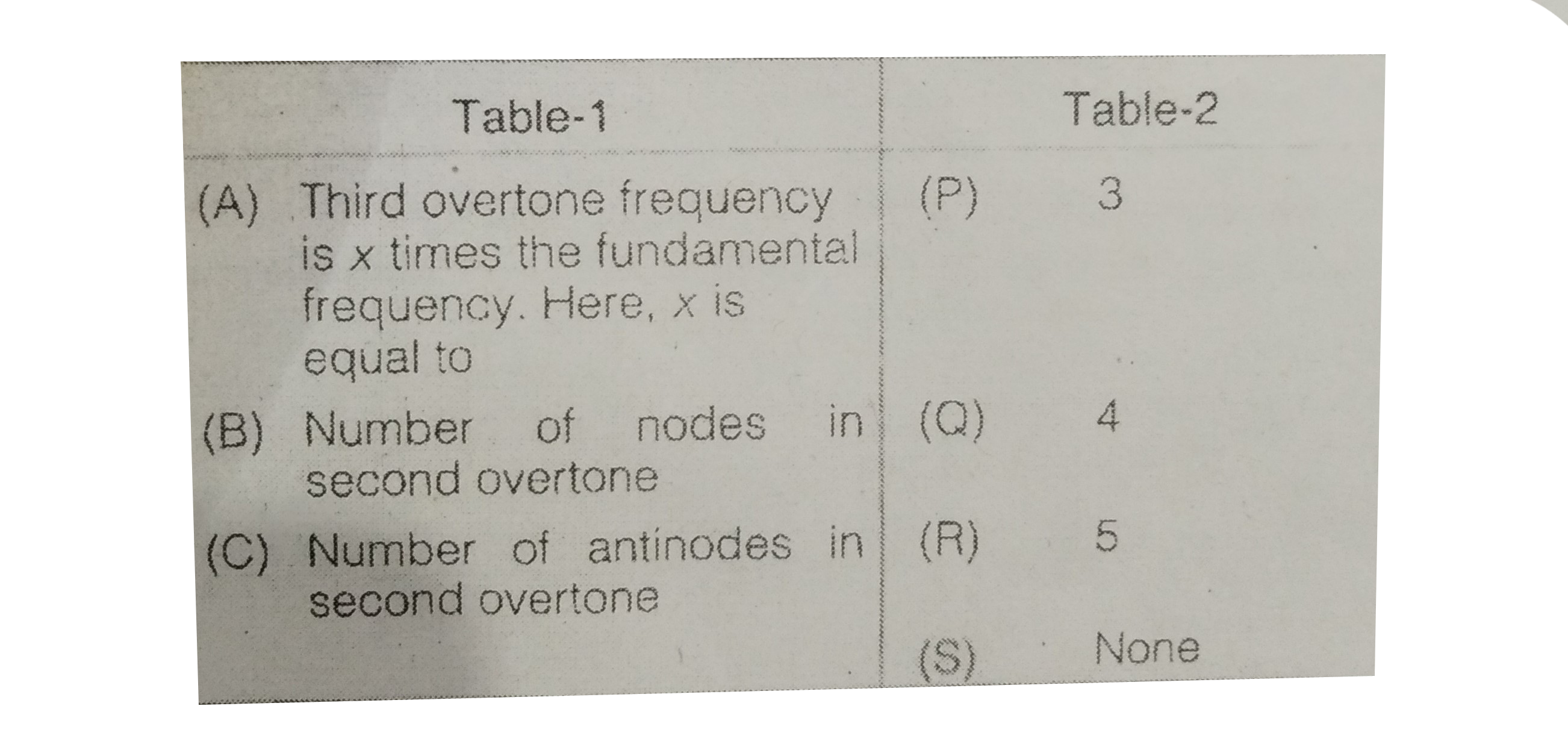(A): Sound produced by an open organ pipe is richer than the sound produced by a closed organ pipe.
(R): Outside air can enter the pipe from both ends, in case of open organ pipe.
Both 'A' and 'R' are true and 'R' is the correct, explanation of 'A'.
Both 'A' and 'R' are true and 'R' is not the correct explanation of 'A'
A' is true and 'R' is false
Both 'A' and 'R' are false
The correct Answer is:B
To analyze the given statements and determine their truthfulness and relationship, we can follow these steps:
Step 1: Understand the Assertion
The assertion (A) states that "Sound produced by an open organ pipe is richer than the sound produced by a closed organ pipe."
- Explanation: An open organ pipe allows sound waves to resonate in a way that produces a richer sound because it can produce a wider range of harmonics. This is due to the fact that open pipes support both even and odd harmonics.
Step 2: Understand the Reason
The reason (R) states that "Outside air can enter the pipe from both ends, in case of open organ pipe."
- Explanation: This statement is true as well. An open organ pipe has openings at both ends, allowing air to move freely in and out, which contributes to the sound production. However, this fact alone does not explain why the sound is richer.
Step 3: Analyze the Relationship between A and R
Now we need to determine if R correctly explains A.
- While both A and R are true, the reason provided (R) does not adequately explain why the sound from an open organ pipe is richer than that from a closed organ pipe. The richness of the sound is primarily due to the harmonic content, not merely the ability of air to enter from both ends.
Conclusion
Based on the analysis:
- Both A and R are true.
- R does not serve as a correct explanation for A.
Thus, the correct answer is: Both A and R are true, but R is not the correct explanation of A.
The assertion (A) states that "Sound produced by an open organ pipe is richer than the sound produced by a closed organ pipe."
The reason (R) states that "Outside air can enter the pipe from both ends, in case of open organ pipe."
Now we need to determine if R correctly explains A.
Based on the analysis:
- Both A and R are true.
- R does not serve as a correct explanation for A.
Topper's Solved these Questions
- WAVESBOOK - AAKASH SERIESCHAPTER - WAVESEXERCISE - EXERCISE-II (Wave Equations & Basics :)
19 Videos
- WAVESBOOK - AAKASH SERIESCHAPTER - WAVESEXERCISE - EXERCISE-II (Strings (Speed of a travelling wave:))
23 Videos
- WAVESBOOK - AAKASH SERIESCHAPTER - WAVESEXERCISE - EXERCISE-IA (Matching )
4 Videos
- WAVE OPTICSBOOK - AAKASH SERIESCHAPTER - WAVE OPTICSEXERCISE - PROBLEMS (LEVEL - II)
33 Videos
- WAVES OPTICSBOOK - AAKASH SERIESCHAPTER - WAVES OPTICSEXERCISE - EXERCISE -III (POLARISITION)
10 Videos
Similar Questions
Knowledge Check
The fundamental note produced by a closed organ pipe is of frequency v. The fundamental note produced by an open organ pipe of same length will be of frequency
Aυ2BυC2υD4υ
At the open end of organ pipe
View SolutionThe fundamental frequency in an open organ pipe is equal to the third harmonic of a closed organ pipe. If the length of the closed organ pipe is 20 cm, the length of the open organ pipe is
View SolutionAn organ pipe, open at both ends, contains
View SolutionIn closed organ pipe at one end…………….

View SolutionFor a closed organ pipe, match the following .

View SolutionA): An open organ pipe of certain length have the same fundamental frequency as closed organ pipe of half the length.
(R): In the case of open organ pipe, at both the ends antinodes are formed, while in the closed organ pipe at one end antinode and at the other end node is formed.
View SolutionRegarding an open organ pipe , which of the following is correct?
View Solution

